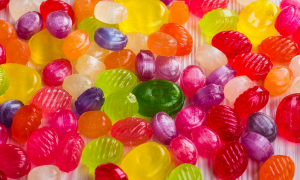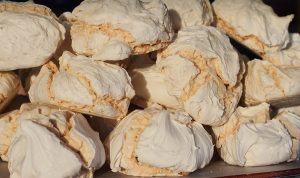
Exploring the Sweet Symphony
We all know that classic, comforting combination – a warm, creamy glass of milk with a sprinkle of sugar on top. It’s a simple pleasure that brings back memories of childhood, and it remains a beloved treat across generations. But have you ever stopped to explore the magic behind this seemingly ordinary pairing?
Beyond its ability to satisfy our sweet cravings, the combination of sugar and milk has fascinating chemistry at play. The interplay between these two ingredients creates a harmonious blend of textures and flavors that’s hard to resist.
Let’s dive into the science behind this culinary masterpiece.
The Science Behind the Sweetness
Milk, with its rich creamy texture, is made up of various components like proteins, fats, lactose (the sugar), and water. But what makes it truly special is lactose itself. This natural sugar plays a crucial role in the sweetness we experience when combining it with sugar.
When you add sugar to milk, the dissolved sugar molecules interact with lactose molecules. This interaction creates a more uniform and lasting sweetness. It’s like magic! The sugar molecules bind to the lactose molecules, ensuring a smooth and even distribution of sweetness throughout the milk.
Why does this happen? The answer lies in their molecular structures. Sugar, being a small molecule, readily dissolves into water. Lactose, on the other hand, with its complex structure, needs an extra push to dissolve properly. This interaction leads to the creation of a more stable and long-lasting sweetness.
The Texture Transformation
Adding sugar to milk transforms the texture in a delightful way. The sugar molecules interact with the proteins in milk, creating tiny clumps. These microscopic clusters give the milk a thicker consistency.
Think of it like this: Imagine adding salt to water. You’ll notice how the water becomes more concentrated and dense, right? It’s similar with sugar; it helps to thicken the milk, making it creamier.
The combination of these textures creates a delightful experience. The smooth, creamy texture is enhanced by the subtle sweetness, creating an enjoyable taste sensation on the tongue.
A World of Flavors
Beyond the basic pairing of sugar and milk, there’s a whole world of variations waiting to be explored!
From using different types of milk like almond or oat milk for unique flavors to experimenting with alternative sweeteners like honey or agave to playing with different ratios of sugar and milk, you can create endless possibilities in your culinary creations.
Imagine the decadent richness of a classic cinnamon-sugar milk served hot, or the refreshing coolness of a sugar-rimmed iced milk.
The possibilities are truly endless! The key is to experiment with different flavors to discover what you enjoy the most. Just like every recipe has its secret ingredient, this simple combination offers endless opportunities for culinary creativity.
A Culinary Journey Through Time
Sugar and milk have been companions for centuries, shaping culinary traditions across cultures and time periods.
From ancient Egyptians brewing a sugary concoction as a drink to the British adding sugar to their breakfast porridge, this dynamic duo has been a constant in our kitchens.
The use of honey and dates in early recipes is evidence of how these ingredients were valued for their sweetness and nourishing properties. These ancient pairings continue to inspire modern chefs today, who are constantly finding new ways to unlock the magic of sugar and milk in their culinary creations.
A Timeless Treat
So, next time you reach for that glass of warm milk with a sprinkle of sugar, take a moment to appreciate its simple elegance. The combination of sugar and milk continues to be a timeless treat, offering a comforting, nostalgic experience that transcends generations.
It’s a reminder to step back and enjoy the little things in life, and savor the sweet symphony of flavors.
Whether you prefer it classic or with your own innovative twists, this delightful pairing is sure to bring a smile to your face and warm your heart.


